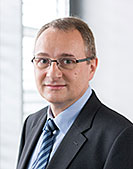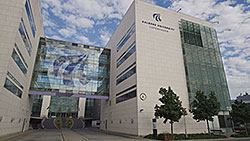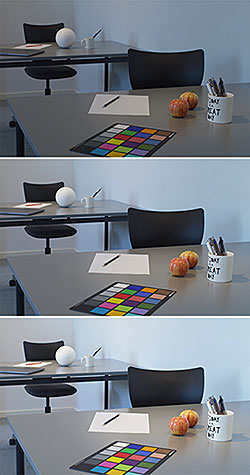Research project combines dynamic daylight and artificial light
New quality of light for work environments
A new approach to lighting design and technology is the focus of the Double Dynamic Lighting project conducted by the renowned Aalborg University in Copenhagen, supported and accompanied by several leading lighting companies. The research team led by Prof. Ellen Kathrine Hansen is exploring the combination of dynamic daylight and artificial light in a spatial context and opening up a new dimension for architects and lighting experts in supporting individual needs and different working requirements.
The Double Dynamic Lighting (DDL) research project sets the guidelines for comfortable illumination of workplaces by combining direct and diffuse dynamic daylight and artificial light. The new approach of DDL will have a positive impact on perceived atmosphere, visual comfort, and work engagement. The results demonstrate the potential to use new sensor and lighting technologies to meet human needs. The project team produced proposals for lighting scenes based on the natural course of the daylight as well as current sky conditions. By exploring how a responsive lighting technology that reacts to and complements daylight inflow can reconnect man and nature, the findings can help to form a more holistic design approach in the future.
The project is examining the spatial conditions in a dynamic lighting environment and their influence on the well-being of users. Practical design guidelines are being developed, tested and implemented in a series of investigations. This work is being conducted in existing working environments with dynamic light, in lighting laboratories at Aalborg University and in interactive, three-dimensional computer models.
The results of the field study demonstrate that it is possible to define dynamic light settings in response to the dynamics of daylight through a combination of direct and diffuse lighting. DDL was validated to have a positive impact on perceived atmosphere, visual comfort, and work engagement compared to static lighting. In general, it was confirmed that the combination of directional task lighting and diffuse ambient lighting in response to sky types and measured daylight levels in the workspace was preferred to standard static diffuse lighting.
An analysis of responses from interviewees reveals a large difference in perceived visual comfort between dynamic and static lighting periods, indicating that working with light zones and with direct and diffuse lighting components and uneven light distribution enable a high level of visual comfort to be achieved. The industry partners added their practical application knowledge and worked hand in hand with the university.
Prof. Ellen Kathrine Hansen, Head of Lighting Design in the Department of Architecture, Design & Media Technology, has this to say about the study: “The aim of the study is to apply an innovative mix of methods to create a holistic approach to lighting planning which can then function as a seal of quality in the lighting industry. A combination of biological, aesthetic and functional aspects will form the basis for the design process.”
Press contact:

Tridonic GmbH & Co KG
Färbergasse 15
6851 Dornbirn, Austria
Tel. +43 5572 395-45236
Mobile +43 664 80892 6313



